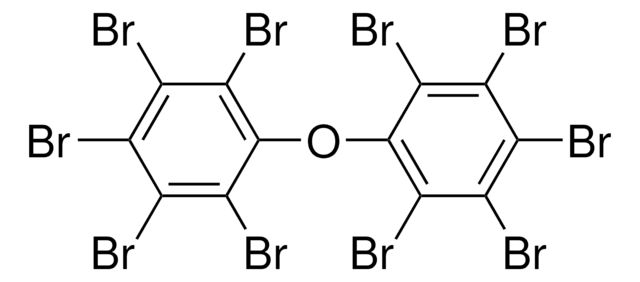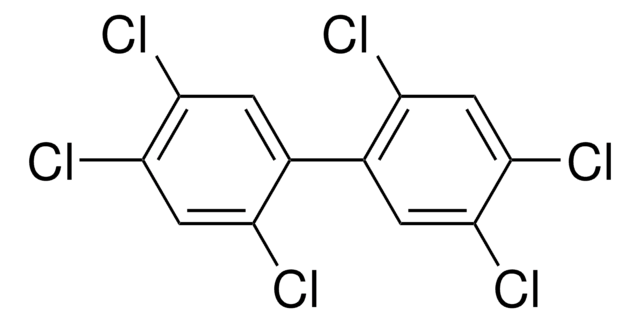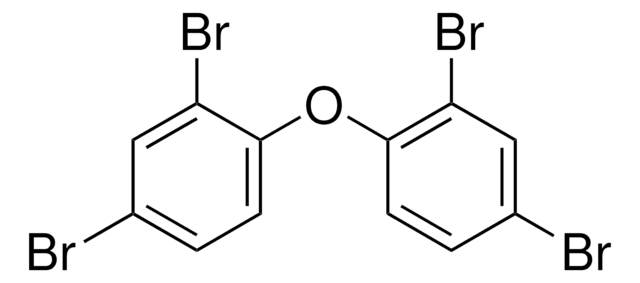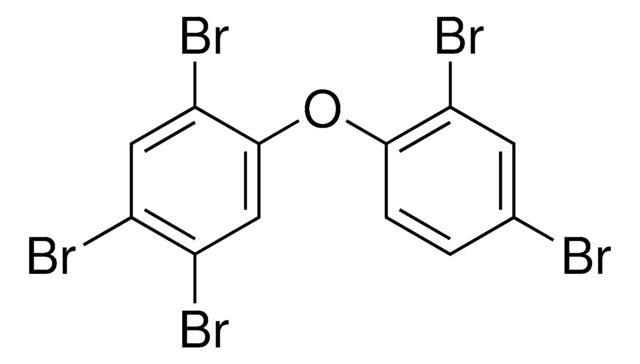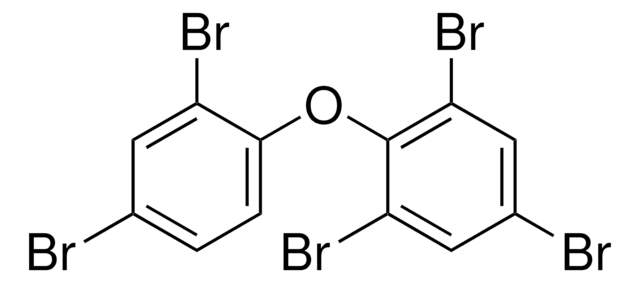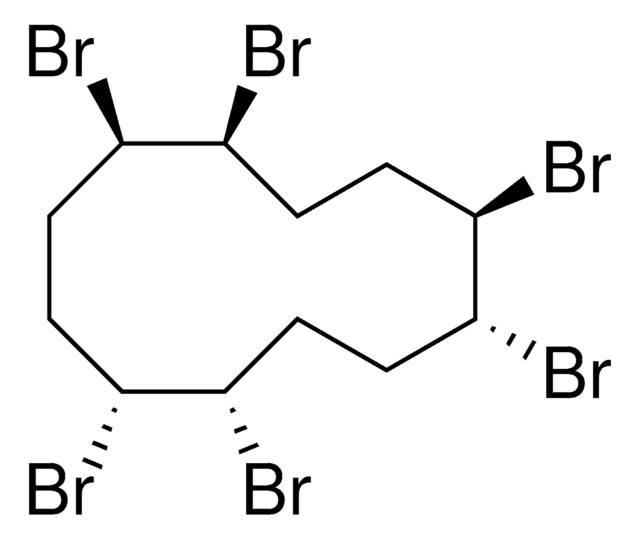91408
BDE No 37
analytical standard
Sinonimo/i:
3,4,4′-TriBDE, 3,4,4′-Tribromodiphenyl ether
About This Item
Prodotti consigliati
Grado
analytical standard
Livello qualitativo
Saggio
≥98.0% (GC)
Durata
limited shelf life, expiry date on the label
Punto di fusione
48-52 °C
Formato
neat
InChI
1S/C12H7Br3O/c13-8-1-3-9(4-2-8)16-10-5-6-11(14)12(15)7-10/h1-7H
YALAYFVVZFORPV-UHFFFAOYSA-N
Prodotti consigliati
Avvertenze
Danger
Indicazioni di pericolo
Consigli di prudenza
Classi di pericolo
Aquatic Acute 1 - Aquatic Chronic 1 - Eye Dam. 1
Codice della classe di stoccaggio
11 - Combustible Solids
Classe di pericolosità dell'acqua (WGK)
WGK 3
Punto d’infiammabilità (°F)
Not applicable
Punto d’infiammabilità (°C)
Not applicable
Choose from one of the most recent versions:
Certificati d'analisi (COA)
Don't see the Right Version?
If you require a particular version, you can look up a specific certificate by the Lot or Batch number.
Possiedi già questo prodotto?
I documenti relativi ai prodotti acquistati recentemente sono disponibili nell’Archivio dei documenti.
Il team dei nostri ricercatori vanta grande esperienza in tutte le aree della ricerca quali Life Science, scienza dei materiali, sintesi chimica, cromatografia, discipline analitiche, ecc..
Contatta l'Assistenza Tecnica.
